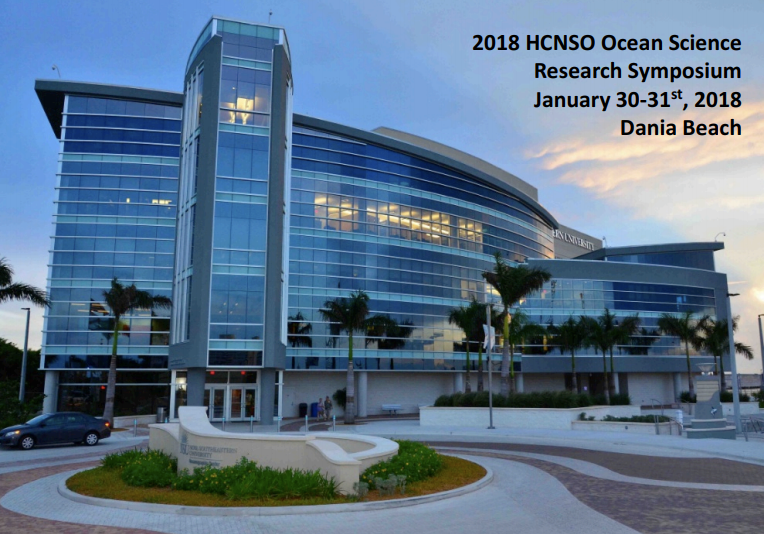Title
Investigating population transitions from the threatened parental species, Acropora cervicornis, to its hybrid in the U.S. Virgin Islands
Location
Guy Harvey Oceanographic Center Facility
Start
1-30-2018 5:00 PM
Type of Presentation
Poster Presentation
Abstract
Over the past three decades, there has been a marked decline in the reef-building Caribbean corals, Acropora cervicornis and A. palmata. The decline in acroporids is a result of disease outbreaks, physical disturbances, predation and environmental stressors and has led to their listing as threatened under the U.S Endangered Species Act. Recently, anecdotal evidence in the U.S. Virgin Islands suggest that A. prolifera, the hybrid of these threatened species, is colonizing areas that were once dominated by A. cervicornis. No other coral hybridizing system is currently known to exist in the Caribbean, therefore presenting a unique opportunity to further investigate the impacts of hybridization between threatened species. Hybridization has the potential to increase biodiversity through the formation of new species or lead to the extinction of one or both parental species via introgressive backcrossing and resource competition. A total of 139 tissue samples were collected from hybrids and parental species at three sites to compare genotypic diversity and specifically understand if the hybrid colonization was from one, rare event or multiple sexually derived individuals. We found that A. cervicornis and A. prolifera had the highest genotypic diversity, followed by reduced diversity in A. palmata. This confirms that both parental species and the hybrid are propagating via sexual reproduction and asexual fragmentation, and that the hybrid colonization is from multiple sexually derived individuals. Additionally, 12 years of video transects at the three sites will be analyzed to compare the change in percent cover among acroporids over time. Thus, acroporid hybrids may become the primary habitat building coral of shallow reefs in the U.S. Virgin Islands, filling an important ecological role left void by the loss of the parental species.
This document is currently not available here.
Investigating population transitions from the threatened parental species, Acropora cervicornis, to its hybrid in the U.S. Virgin Islands
Guy Harvey Oceanographic Center Facility
Over the past three decades, there has been a marked decline in the reef-building Caribbean corals, Acropora cervicornis and A. palmata. The decline in acroporids is a result of disease outbreaks, physical disturbances, predation and environmental stressors and has led to their listing as threatened under the U.S Endangered Species Act. Recently, anecdotal evidence in the U.S. Virgin Islands suggest that A. prolifera, the hybrid of these threatened species, is colonizing areas that were once dominated by A. cervicornis. No other coral hybridizing system is currently known to exist in the Caribbean, therefore presenting a unique opportunity to further investigate the impacts of hybridization between threatened species. Hybridization has the potential to increase biodiversity through the formation of new species or lead to the extinction of one or both parental species via introgressive backcrossing and resource competition. A total of 139 tissue samples were collected from hybrids and parental species at three sites to compare genotypic diversity and specifically understand if the hybrid colonization was from one, rare event or multiple sexually derived individuals. We found that A. cervicornis and A. prolifera had the highest genotypic diversity, followed by reduced diversity in A. palmata. This confirms that both parental species and the hybrid are propagating via sexual reproduction and asexual fragmentation, and that the hybrid colonization is from multiple sexually derived individuals. Additionally, 12 years of video transects at the three sites will be analyzed to compare the change in percent cover among acroporids over time. Thus, acroporid hybrids may become the primary habitat building coral of shallow reefs in the U.S. Virgin Islands, filling an important ecological role left void by the loss of the parental species.


